目次~Table of Contents
Features
Hakodate City partially restores Hall
Today, the ruins of Shinori Tate have been developed by Hakodate City. They are a relaxing place on the hill above the Shinori Fishing Port in the south. They still have the square space in its center, but with no buildings, which is surrounded by the earthen walls and dry moats outside. They are also covered with lawn, which look beautiful.

There is the memorial monument of the battle between the “Japanese” and the Ainu people and a rest station in front of the ruins entrance. The entrance at the western side of the ruins, have double of the dry moats. If you want to enter the ruins, you can go across the bridge over the first moat and the earthen bridge over the second moat. They were restored by the city in the present time to show the late stage of the hall.
The aerial photo around the castle
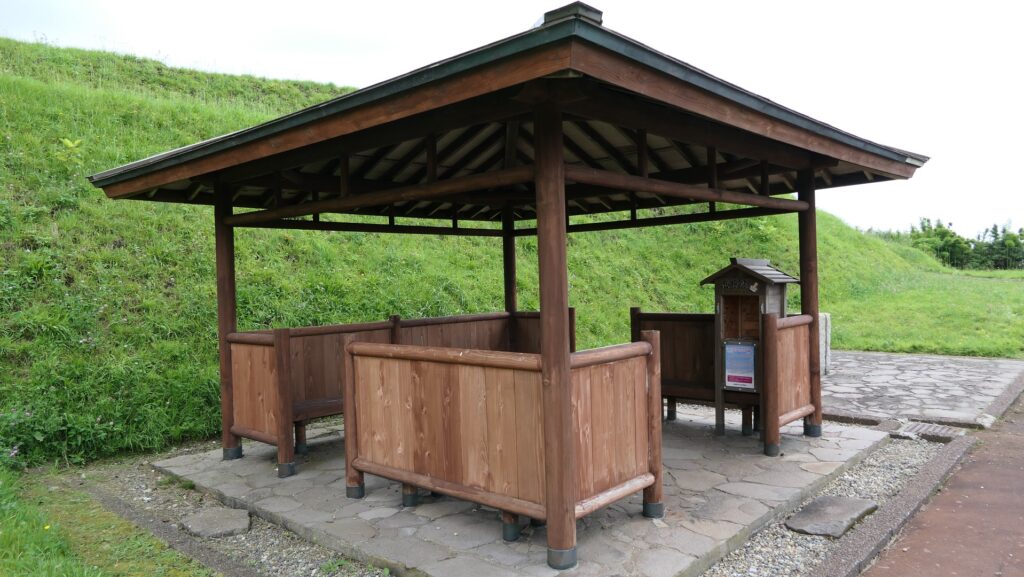


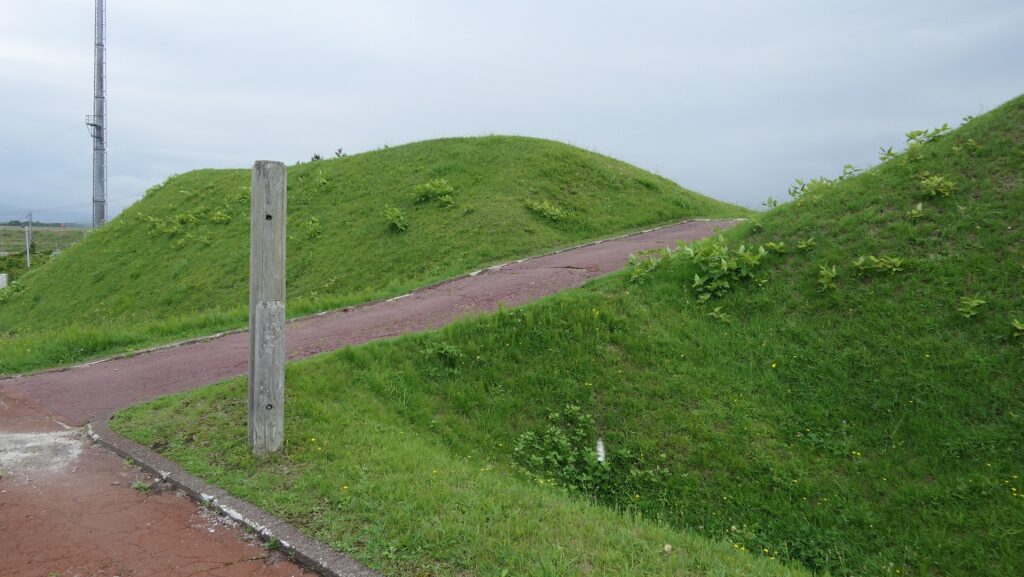
Center of Ruins
The center of the ruins is a square surrounded by the earthen walls, which just looks like one of the Japanese style castles’ enclosures which developed after Shinori Tate was built. According to the excavation team, there were three generation houses. The second or third ones were probably rebuilt after the hall was first captured by the Ainu people. How the first-generation houses were built is marked on the ground. The place of the former well is surrounded by four-sided plates. Many Chinese ceramic ware and Japanese potteries were found during the excavation. There are also two monuments of the hall, which were built by local people who first tried to preserve the ruins in the Taisho Era, about 100 years ago.
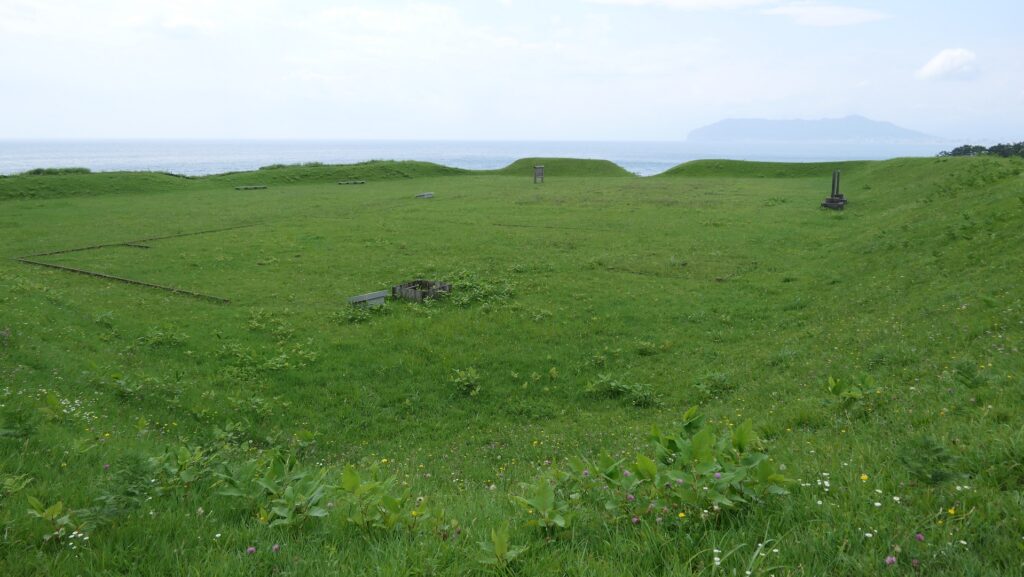


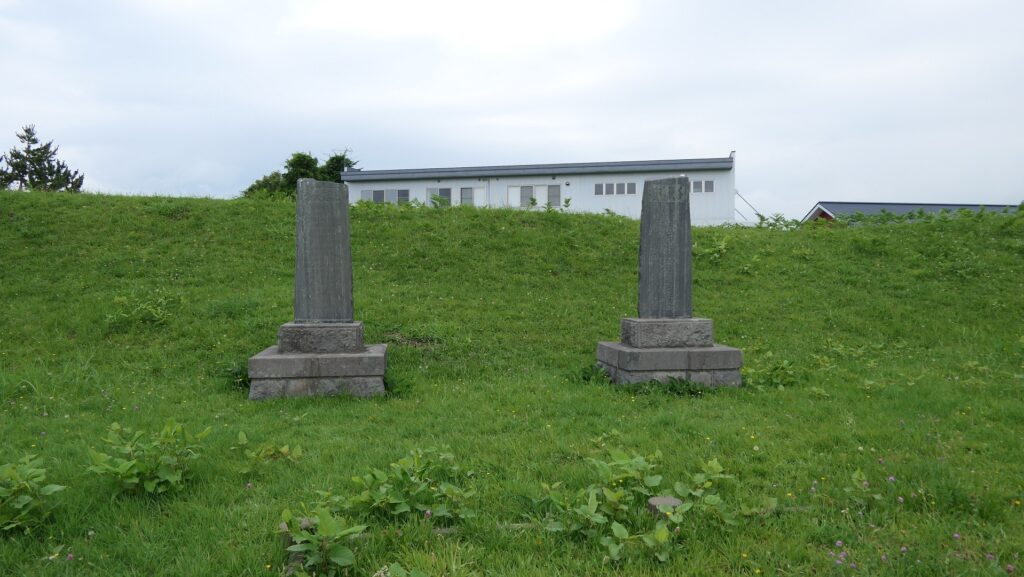
Enjoying Great View
I recommend you stand or sit on the southern side of the earthen walls. You can enjoy a great view of the Tsugaru Channel on the front and a distant view of Hakodate Mountain on the right. If the weather is fine, you can also see the mainland over the channel. It must be a good experience for you to relax and refresh. If you have time, you should consider walking the path outside the earthen walls on the bottom of the dry moats. For example, the eastern side of the moats uses a stream, so you can see the hall was built using natural terrain as well.

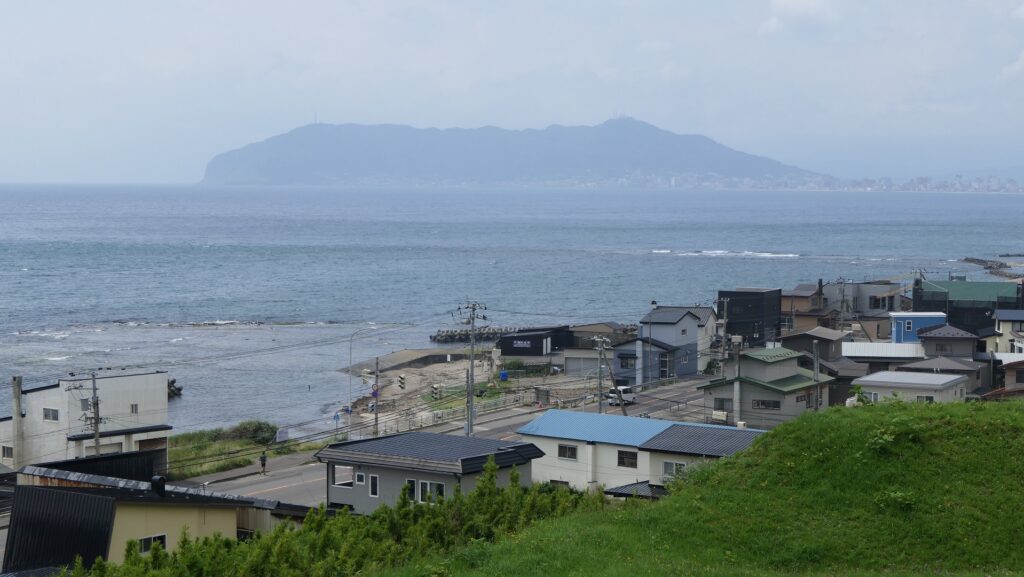
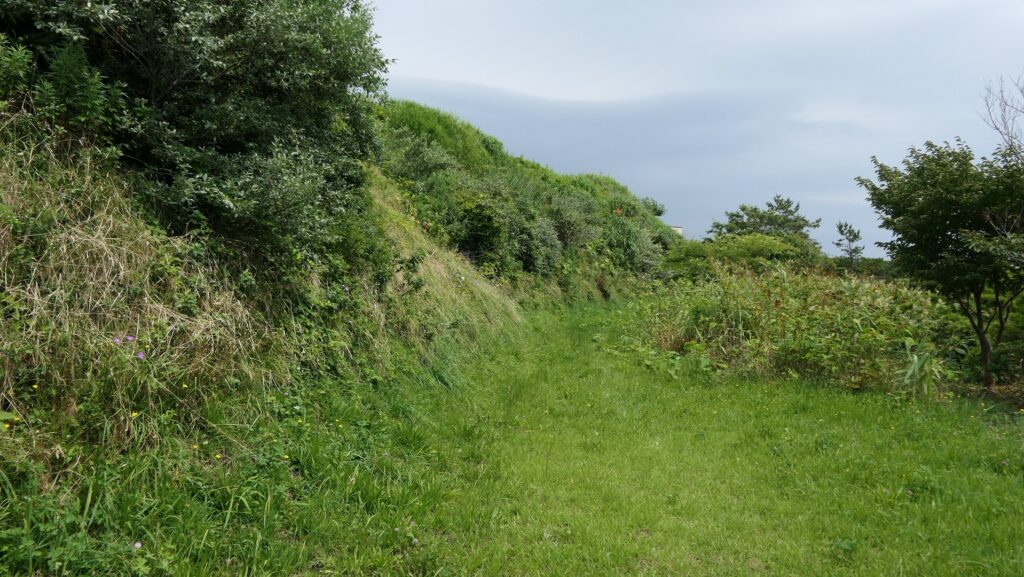


To be continued in “Shinori-Tate Part3”
Back to “Shinori-Tate Part1”


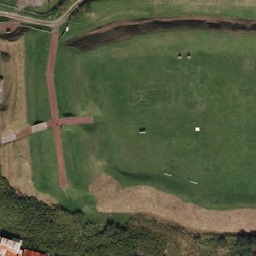

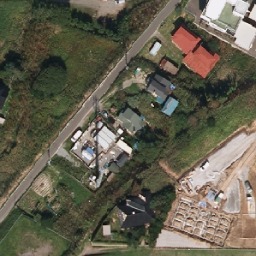

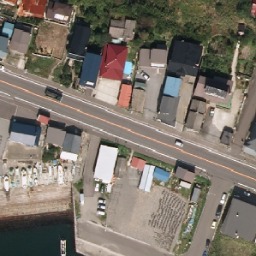














「101.Shinori-Tate Part2」への2件のフィードバック